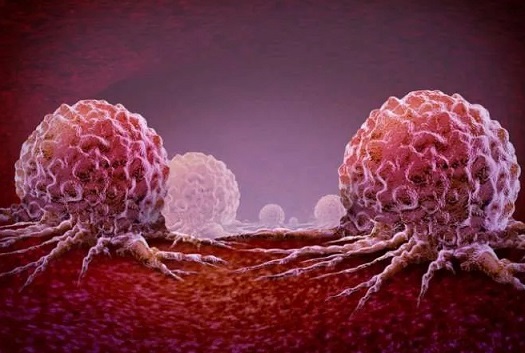Jacaric acid from plants found to kill breast cancer cells and also enhances other cancer treatment protocols
Nikhil Prasad Fact checked by:Thailand Medical News Team Apr 08, 2025 4 days, 16 hours, 27 minutes ago
Medical News: Natural plant oil shows promise in destroying aggressive breast cancer cells
In a groundbreaking discovery, scientists have identified a natural fatty acid called jacaric acid (JA), found in certain plant oils, as a powerful agent in killing breast cancer cells through a process called ferroptosis. This unique form of cell death is triggered by the excessive oxidation of fats inside cancer cells. Remarkably, the study shows that JA can also supercharge the effects of another drug, RSL3, making it more effective at lower doses.

This
Medical News report covers the work of researchers from several prestigious institutions including UCLouvain’s Louvain Institute of Biomolecular Science and Technology, the Institut de Recherche Expérimentale et Clinique (IREC), University Hospitals Leuven and KU Leuven in Belgium, as well as the University Hospital Regensburg in Germany.
Understanding ferroptosis and why it matters
Ferroptosis is not your typical cell death. Unlike apoptosis (the body’s usual way of eliminating damaged cells), ferroptosis is caused by the uncontrolled buildup of lipid peroxides - oxidized fats - that essentially cause the cancer cells to rust from within. This method is particularly useful against cancer cells that have grown resistant to traditional treatments.
The researchers focused on jacaric acid, a lesser-known type of fat called a conjugated linolenic acid, which is found in some plant seeds. It’s known for its strong ability to oxidize and was compared to its more common cousin, alpha-linolenic acid, which showed no cancer-killing effects.
Lab tests confirm the killing power of jacaric acid
The scientists tested JA on different types of breast cancer cells using both flat (2D) cell cultures and more realistic 3D models, including patient-derived organoids, which mimic the architecture of real tumors. JA consistently reduced the viability of cancer cells across all models. Triple-negative breast cancer (TNBC) cells - a highly aggressive and hard-to-treat subtype - were especially vulnerable.
Importantly, when combined with RSL3, a known ferroptosis-inducing drug that disables the GPX4 enzyme (which normally protects cells from oxidative damage), JA significantly lowered the amount of RSL3 needed to kill the cancer cells. In some cases, the required dose was reduced by up to 10 times, suggesting that JA could help reduce side effects by allowing for lower drug doses.
How jacaric acid works inside cancer cells
The key to JA’s effect lies in how it integrates into cancer cell membranes. The research team showed that JA embeds itself into the fatty structures of the cells - especially phospholipids - making them highly susceptible to oxidation. This sparks lipid peroxidation, the main trigger for ferroptosis.
Interestingly, despite causing such profound cellular changes, JA didn’t significantly alter the cancer cells’ genetic activity. This means its effect is mostly chemical, driven by how it reshapes the
lipid environment inside cells rather than switching genes on or off.
Another critical finding was the role of MUFAs (monounsaturated fatty acids), which can resist oxidation and protect cells from ferroptosis. Cells with more MUFAs, like the MCF7 breast cancer line, were less sensitive to JA. But when combined with an SCD1 inhibitor that blocks MUFA production, even those cells became more vulnerable.
Real-world potential and future directions
In patient-derived tumor organoids - miniature tumors grown from real breast cancer patients - JA significantly decreased cell viability, especially at higher concentrations. When combined with RSL3, the results were even more dramatic, with some organoids showing complete cell death.
This dual strategy - using JA to weaken the cancer cells’ defenses and RSL3 to deliver the final blow - could pave the way for a new form of cancer therapy that’s both effective and less toxic. The researchers emphasize that while the results are promising, more studies are needed to test JA in animal models and to understand how it behaves in the human body.
They also suggest developing advanced delivery systems, such as nanoparticles, to protect JA from rapid breakdown and ensure it reaches tumor cells intact.
Conclusion
This study uncovers a natural compound, jacaric acid, that can effectively kill breast cancer cells through ferroptosis while boosting the power of existing drugs like RSL3. Its action is tied to lipid oxidation rather than genetic manipulation, offering a potentially safer and more direct way to target treatment-resistant tumors. The dual treatment strategy shows great promise in both lab and patient-derived models. With further research, jacaric acid could become part of a new wave of cancer therapies that exploit the metabolic weaknesses of tumors, particularly the aggressive triple-negative subtype that has long eluded effective treatment.
The study findings were published in the peer-reviewed International Journal of Molecular Sciences
https://www.mdpi.com/1422-0067/26/7/3375
For the latest on Breast Cancer, keep on logging to Thailand
Medical News.
Read Also:
https://www.thailandmedical.news/news/weill-cornell-researchers-warn-that-a-common-dietary-fat-is-fueling-the-most-dangerous-type-of-breast-cancer
https://www.thailandmedical.news/news/understanding-lipid-metabolism-in-breast-cancer-and-its-impact-on-treatment
https://www.thailandmedical.news/news/study-warns-that-breast-cancer-incidences-and-deaths-are-rising-exponentially-especially-in-women-under-50
https://www.thailandmedical.news/pages/thailand_doctors_listings
https://www.thailandmedical.news/articles/hospital-news
